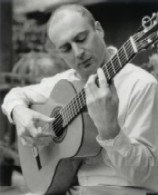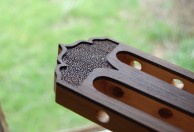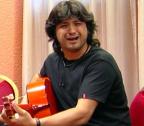Welcome to one of the most active flamenco sites on the Internet. Guests can read most posts but if you want to participate click here to register.
This site is dedicated to the memory of Paco de Lucía, Ron Mitchell, Guy Williams, Linda Elvira, Philip John Lee, Craig Eros, Ben Woods, David Serva and Tom Blackshear who went ahead of us.
We receive 12,200 visitors a month from 200 countries and 1.7 million page impressions a year. To advertise on this site please contact us.
|

|
|
saddle design question
|
You are logged in as Guest
|
|
Users viewing this topic: none
|
|
Login  | |
|

   
X
Posts: 72
Joined: May 21 2009

|
 RE: saddle design question (in reply to constructordeguitarras) RE: saddle design question (in reply to constructordeguitarras)
|
|
|
Hello, Ethan,
Thanks lots for your attention. However I don't think I explained myself well. In my opinion, my question really has nothing to do with compensation.
Consider this: If I pluck a string, the string vibrates in many directions. We can think of the vibrations as of two kinds: vibrations parallel to the soundboard surface, and vibrations perpendicular to the soundboard surface.
The string length for the perpendicular vibrations is fixed (for an open string) by its end points, at the nut and at the saddle.
The string length for the parallel vibrations is also fixed at the nut, but since the end at the saddle isn't fixed in place by a groove, the string will tend to slip back and forth over the saddle, so that its saddle end point has effectively moved towards the tail block, and the length of the vibrating string is effectively longer (the note will play flat).
Compensation will not fix this, because the problem of saddle slippage will be present however you compensate.
As I said, the error is very small and it probably adds to the timbre of the note, but it's questions like this that distract me when I should be practicing my picado.
|
|
|
|
REPORT THIS POST AS INAPPROPRIATE |
Date Jul. 10 2019 23:17:41
 |
|

   
timoteo
Posts: 219
Joined: Jun. 22 2012
From: Seattle, USA

|
 RE: saddle design question (in reply to X) RE: saddle design question (in reply to X)
|
|
|
quote:
The string length for the parallel vibrations is also fixed at the nut, but since the end at the saddle isn't fixed in place by a groove, the string will tend to slip back and forth over the saddle, so that its saddle end point has effectively moved towards the tail block, and the length of the vibrating string is effectively longer (the note will play flat).
Your model is wrong. So not only are you overthinking it, as Andy said, but you're also underthinking it because you've simplified things too much.
When a string is plucked, you're effectively increasing the tension of the string, which pulls the top of the saddle forward toward the nut. The whole bridge rotates, pushing the top of the guitar down into the body in front of the bridge and pulling the top up out of the body behind the bridge. That's what makes the sound!
And while any minute wiggle back and forth along the saddle may effectively lengthen the string, that's part of the compensation that Ethan mentioned - the saddle is positioned so that the string sounds right, it's not entirely positioned based on an exact mathematical calculation.
|
|
|
|
REPORT THIS POST AS INAPPROPRIATE |
Date Jul. 11 2019 5:47:12
 |
|

   
Richard Jernigan
Posts: 3430
Joined: Jan. 20 2004
From: Austin, Texas USA

|
 RE: saddle design question (in reply to timoteo) RE: saddle design question (in reply to timoteo)
|
|
|
quote:
ORIGINAL: timoteo
When a string is plucked, you're effectively increasing the tension of the string, which pulls the top of the saddle forward toward the nut. The whole bridge rotates, pushing the top of the guitar down into the body in front of the bridge and pulling the top up out of the body behind the bridge. That's what makes the sound!
It's a little more complicated than that. In fact, it's a lot more complicated than that. There are two more components of force on the bridge beside the force along the length of the string. When the string is plucked it sets in motion a lateral displacement, perpendicular to the length of the string. When the lateral displacement wave reaches the saddle, it exerts a force perpendicular to the string length (and the change in tension) on the saddle. The lateral displacement force can be resolved into two components, one that tries to move the saddle--and hence the soundboard--up and down, the other component which tries to move the saddle sideways.
If the break angle at the saddle is acute enough, and the string tension is strong enough, the sideways force never overcomes the static friction, and the string doesn't slip along the bone. This is the case in every successful guitar I have examined in detail.
Under the same circumstances, the string never leaves the saddle in the upward direction, so the effect is to move the bridge-and the sound board-up and down. It is this component of force which is most effective in producing sound, though the other two each play a role.
More in considerable detail, with a lot of measurements in Al Carruth's great paper, "String Theory": http://www.alcarruthluthier.com/Downloads/stringTheory.pdf
RNJ
|
|
|
|
REPORT THIS POST AS INAPPROPRIATE |
Date Jul. 11 2019 22:40:29
 |
|
 New Messages New Messages |
 No New Messages No New Messages |
 Hot Topic w/ New Messages Hot Topic w/ New Messages |
 Hot Topic w/o New Messages Hot Topic w/o New Messages |
 Locked w/ New Messages Locked w/ New Messages |
 Locked w/o New Messages Locked w/o New Messages |
|
 Post New Thread
Post New Thread
 Reply to Message
Reply to Message
 Post New Poll
Post New Poll
 Submit Vote
Submit Vote
 Delete My Own Post
Delete My Own Post
 Delete My Own Thread
Delete My Own Thread
 Rate Posts
Rate Posts
|
|
|
Forum Software powered by ASP Playground Advanced Edition 2.0.5
Copyright © 2000 - 2003 ASPPlayground.NET |
0.0625 secs.
|


 Printable Version
Printable Version









 New Messages
New Messages No New Messages
No New Messages Hot Topic w/ New Messages
Hot Topic w/ New Messages Hot Topic w/o New Messages
Hot Topic w/o New Messages Locked w/ New Messages
Locked w/ New Messages Locked w/o New Messages
Locked w/o New Messages Post New Thread
Post New Thread